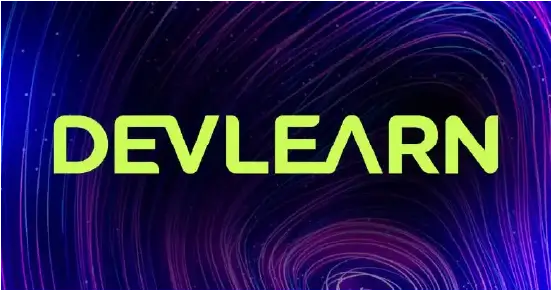Sometimes being a learning leader feels like playing a game of shells at the circus. We think we know where the problem is, but once that shell is lifted, we realize that isn’t where the nut actually is.
This most often occurs when we are order-takers, reacting to what a department manager or executive says they need done. However, responding rather than reacting is critical to being an effective leader in the organization. This requires reframing the role of learning and development (L&D) and building cross-departmental relationships.
Reacting vs. responding
Reacting
When we react to a request, we jump into questions of deadlines, delivery, and desires. What does the manager see as the problem and how do they believe training or resources address the challenge? We start aligning the request with our known approaches, try to understand budget and resource allocation, and figure out how to fit it into an already busy development schedule.
Responding
When we respond to a request, we start by asking, “tell me more.” We dig into why the manager has defined the problem this way, and why they think the proposed approach will address the issue. Ask why. Ask again. And one more time. At this point, we should start to better understand the real issues at stake and who are the parties, technologies, and processes involved.
It’s this last one, processes, that frequently captures where the real problems lie. And processes in business usually do not start or end in solely one department.
Learning leadership adds value with cross-departmental communication
It is at this point that learning leaders can add tremendous value by bringing together managers and practitioners from where the processes connect (or don’t—but should). Depending on the scope of the problem and its impact on overall business success, initiating a discussion with employees across an entire process can be helpful. Why?
Let’s look at an example from the marketing world.
Sales might say they aren’t getting high-quality leads. This has an obvious impact on the business’s bottom line—and it gets senior management’s attention. The poor-quality leads get interpreted as marketing not doing their job well, so the marketing director reaches out to the L&D team, requesting that they develop training on, say, social media advertising.
A project plan is developed, SMEs are consulted, and social media advertising training is launched. Yet three months later, there is no change in the quality of leads. In fact, not only are leads down, but also there is a decrease in positive reviews and contract renewals.
Why didn’t the training work? Reaction.
What would have made a difference? Response.
A proactive response
The learning leader who pauses and responds would look at the points of connection across business units. This leader would explore:
- What is the flow of communication?
- How are different departments sharing information and working together?
- Could there be another reason for poor-quality leads than what was assumed?
In this scenario, the learning professional will proactively meet with people in other departments to look at how information is disseminated throughout the organization. They will also look internally, examining how people within the marketing department process information that is provided.
For example, the learning leader might find that the product development team isn’t communicating to marketing about changes in the product features, or finance doesn’t inform them about changes in the product’s price point. That would mean that what is being advertised by marketing is based on old data, which in turn causes the poor leads and poor user experiences. Thus training on social media advertising would not have accomplished anything toward addressing the real issues at hand.
Marketers have learned the hard way that they need to proactively build relationships with the many departments throughout a company, to hear what are the challenges and opportunities those departments recognize and to help to disseminate that information throughout the company.
L&D as connectors
Yet what if the learning department, which has interaction throughout the organization, took on this mantle? What if L&D teams pivoted to be the “connectors” across departments and functions?
Consider a re-envisioning of L&D, where learning leadership developed the habit of meeting regularly with managers and practitioners across the organization, to learn what frustrations they face and to unearth the points of friction.
Perhaps what slows processing time for one department is difficulty importing the field format used by another department. No amount of training will solve that, but bringing to IT to build a converter will.
Perhaps employees go through required training for an application they no longer actively use or which has switched from a legacy solution to one in the cloud? Have processes, change management, and training been updated to reflect the evolution of the business?
Improving speed to productivity, eliminating unnecessary training time, and highlighting efficiencies—as well as identifying possible savings on software subscriptions—can help L&D be recognized for the heroes we are.
Reframing L&D’s role
When L&D leaders step outside of seeing their role as leading training and consider their job to include greasing the wheels of progress, they will see tremendous opportunity to develop the learning employees really want: Learning that will enable them to do their jobs better and more easily.
Reframing L&D in this way can help learning leaders locate and resolve bottlenecks in the organization, and even become advocates for employees in figuring out how to get those bottlenecks addressed. The impact on the business will be obvious and measurable, not so much by the number of hours of learning consumed but rather by how much productivity and satisfaction has increased.
Build cross-departmental relationships
To achieve this vision, learning professionals need to stop reacting and, instead, respond. Start building the relationships in the various departments now, before the moment of need. Identify advocates within each department involved in the actual “doing” of the work, in addition to the leaders. Facilitate lunch-and-learns for people across departments, where the passing of information happens (or should happen). Facilitate their communication with each other, to see if they can identify points of friction and possible solutions. Empower employees to brainstorm resolutions and improvements, getting potential backing from learning, ideas which otherwise might never see the light of day.
Organizations are complicated. The people working in organizations are complicated. Many of the processes employed are complicated. If L&D steps into a thoughtful role of identifying and addressing the gaps among the people and systems in the organization, they can add incredible value to the business and toward offering valuable, impactful learning initiatives which truly respond to the real problems at hand.
Connect with other learning leaders
Learning leaders and aspiring leaders who are seeking the strategies and skills required to navigate the needs of today’s ever-changing workplace do not need to figure it all out on their own. Connect with a community of your peers to help you explore and resolve today’s biggest learning leadership challenges.
The Learning Leaders Alliance is a vendor-neutral global community for learning leaders who want to stay ahead of the curve and for aspiring leaders wanting to build their skillsets. The Learning Guild’s Alliance Membership package includes access to exclusive digital events and content curated for today’s modern learning leader, as well as opportunities to attend in-person learning leadership events held around the globe. See the details on our website.









